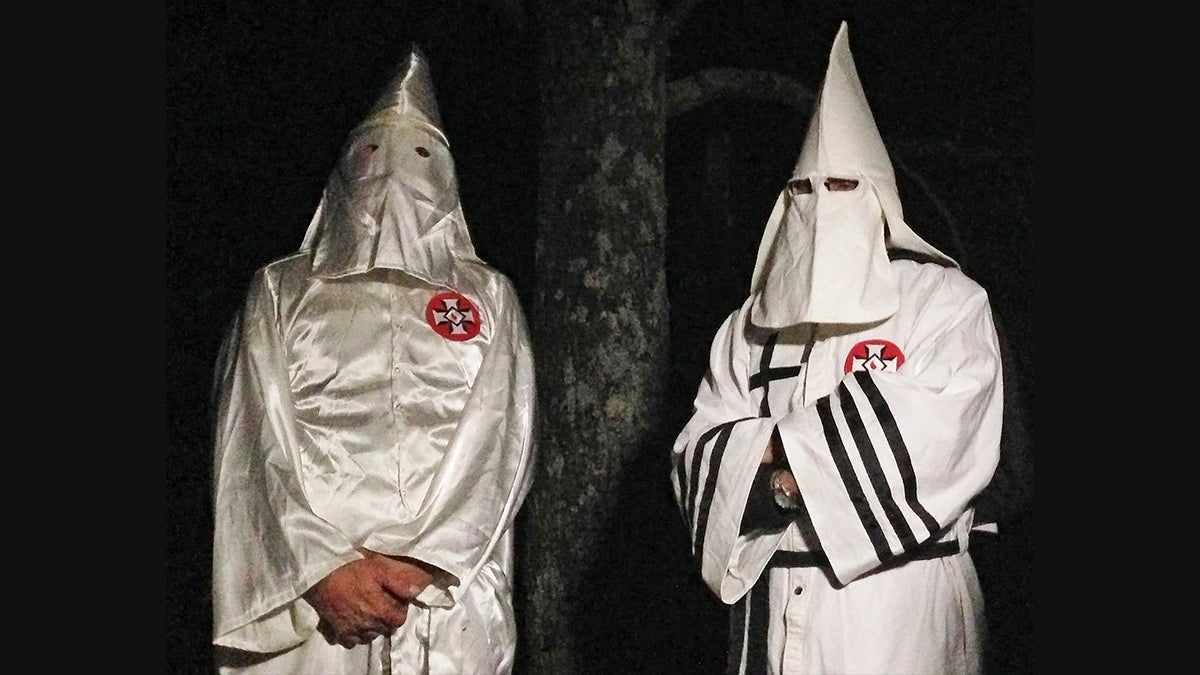Is the Alt-Right becoming America’s new normal?

In this Friday
We cannot allow bigotry to become the new normal in America.
Not in the country where African Americans continue to fight for the freedoms our founding documents so readily conferred upon others. Not in the country where the blood of my ancestors soaks the Southern soil they farmed without recompense. Not in the country that had seemingly come so far on race relations.
Yet here we are. In the wake of Donald Trump’s victory, signs of the new normal continue to surface. The new normal is the march of hooded Klansmen hailing Trump’s election in a North Carolina town. The new normal is Steve Bannon—a hero to the white nationalist alt right movement—being installed as the president-elect’s chief strategist. The new normal is a media trying to reflect a society that seems to be regressing.
That reality hit me hard this weekend, when the Washington Post reported that the Cast Station, a TV and film commercial casting company, had put out a call for “any and all real alt-right thinkers/believers.” The company said it was looking to cast a Cadillac advertisement that would be a “beautifully artistic spot that is capturing all walks of life of America.”
In the notice, released via social media, the casting company went on to say that the ad would be about people “standing together as a union. This is not meant to be offensive in anyway. Just a representation of all sides. Thank you.”
When Reuters and other outlets reported on the notice, a social media firestorm erupted. The casting company said it fired the employee who distributed the notice. Then Cadillac took to its own social media platforms to issue a statement.
“Cadillac did not authorize or approve a casting notice for an ‘alt-right (neo-Nazi)’ role in a commercial,” the statement said. “We unequivocally condemn the notice and are seeking immediate answers from our creative agency, production company and any casting companies involved.”
Perhaps that should be the end of it, but for me, it is only the beginning. As a black man living in the midst of this new normal, I now know that America is a place it was not just a few weeks ago. It is a place where a casting agency would publicly call for white nationalists to help advertise an iconic American brand, and tell us it is meant to be beautiful, but not offensive.
In this new normal, racism, or as Cadillac’s statement rightly called it—a neo-Nazi belief system—is becoming acceptable. And unless Americans of all stripes rise up against it, a media anxious to reflect its customer base will thrust bigotry into the mainstream.
We’ve seen it happen before.
From the very beginnings of the American media, blacks and other minorities were depicted in ways that reinforced prejudices and stereotypes. This was especially true in advertisements.
A 2003 article in Advertising Age magazine acknowledged that in early American ads, blacks were portrayed with characteristics drawn straight from minstrel shows, with “bright red, thick, saucer lips and bulging eyes.”
Popular brand symbols as Uncle Ben; Rastus, the Cream of Wheat chef; and Aunt Jemima were derived directly from slavery.
Asian-Americans fared no better. They were often depicted in advertisements with long braided hair and eating live rats while gleefully washing people’s clothes.
When film came along, there were some opportunities for blacks to make and distribute their own films. African American filmmakers such as Oscar Micheaux did so with some success. But the images of black men as dangerous brutes, as in D.W. Griffith’s Ku Klux Klan-inspired “Birth of a Nation” were so effective that Klan membership ballooned in the decade following the film’s release, and so did lynching.
In the ensuing decades, Hollywood continued to produce films that reinforced stereotypes by portraying blacks in mostly subservient roles. Blacks also were not hired to work behind the scenes. That prompted prominent black actor Sidney Poitier to testify about Hollywood discrimination before New York Congressman Adam Clayton Powell’s Labor Committee in October 1962.
Following the 1960s Civil Rights movement, there were some advances in the way blacks were portrayed in film, television and advertising, but as this year’s #OscarsSoWhite controversy showed, the film industry, in particular, continues to ignore non-whites far too often.
It is against the backdrop of that history that we find ourselves in this moment.
It is a moment when the president-elect is preparing to take office on a platform that castigates ethnic, racial and religious minorities. It is a moment when those who hold bigoted views feel empowered to act upon them.
It is a moment when Americans must stand up and say, “This is not normal.”
Not in advertising. Not in real life. Not at all.
Listen to Solomon Jones weekdays 7 to 10 am on 900 AM WURD
WHYY is your source for fact-based, in-depth journalism and information. As a nonprofit organization, we rely on financial support from readers like you. Please give today.


